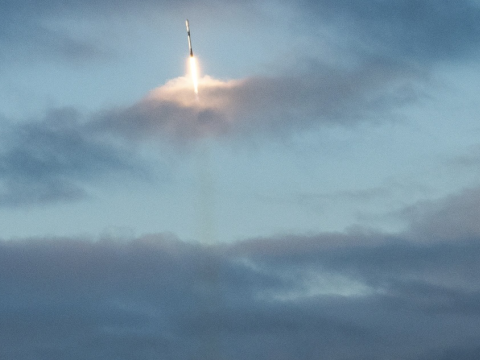Data Centricity for Decision Advantage in Space: Unifying Operations in the Ultimate High Ground
Space is rapidly emerging as a critical warfighting domain, with future conflicts likely to be fought by a coalition of the willing. Waging war in coordination with coalition partners demands a shared operational picture across the armed services, with foreign allies and across air, land, sea, cyber and space domains.
To prepare, the U.S. Space Force must adopt a data-centric strategy that unifies operations, accelerates time to decision and empowers U.S. Space Force Guardians through AI-driven situational awareness and secure, shared data interoperability.
Unified Data Layer Connects Disparate Sources With Secure Access
Enhancing the enterprise data layer is the foundation for a data-centric operational environment that supports real-time decision-making from headquarters to the tactical edge. A unified data fabric ensures the right information reaches the right decision-maker at the right moment, strengthening warfighters at every echelon.
“Zero trust for data” platforms provide a strong fit for the U.S. Department of Defense (DOD). With fine-grain attribute-based access controls, they integrate and analyze data from federated sources at varying classification levels. Combined with advanced transport, ingestion and indexing services, these platforms support end-to-end multilevel security. Built-in data tagging enforces clearance rules while enabling authorized sharing of information that was previously siloed.
High-throughput, low-latency architectures built on zero-trust principles allow Guardians to rapidly ingest records from structured, unstructured and real-time streaming sources. These systems synchronize and prioritize flows so that precise information is delivered where it is most needed. Even in disconnected, degraded, intermittent or limited environments, resilient access ensures continuity of operations across domains.
Accelerate Decisions by Delivering Data to Warfighters Quickly and Securely
A unified data layer makes it possible to automate manual processes and power advanced analytics. Artificial intelligence (AI) adds further value by turning raw data into actionable intelligence at machine speed—overcoming the velocity, volume and variety of modern command, control, communications, computers, cyber, intelligence, surveillance and reconnaissance environments.
AI orchestration tools filter sensor inputs, intelligence feeds and communications streams to highlight what matters most. By reducing cognitive overload, they help commanders and operators act decisively. Modern tools support both advanced customization for developers and intuitive low-code/no-code interfaces for nontechnical users, allowing a broader set of personnel to generate insights in secure environments. Machine learning and predictive analytics extend this capability further, enabling operators to forecast threats and recommend countermeasures—providing the anticipatory intelligence needed for a tactical edge.
Multiply Impact Through Network Integration
The power of a common data environment grows when enriched with external sources. National intelligence feeds, DOD sensors, coalition partner data and open-source intelligence add depth and resilience to operational awareness.
By developing a unified data layer, accelerating decision timelines and integrating diverse external inputs, the Space Force can achieve true data interoperability—building the confidence and agility required for decisive action in space.
Learn more about opportunities to drive data centricity for decision advantage in space by visiting SAIC.com.




Comments